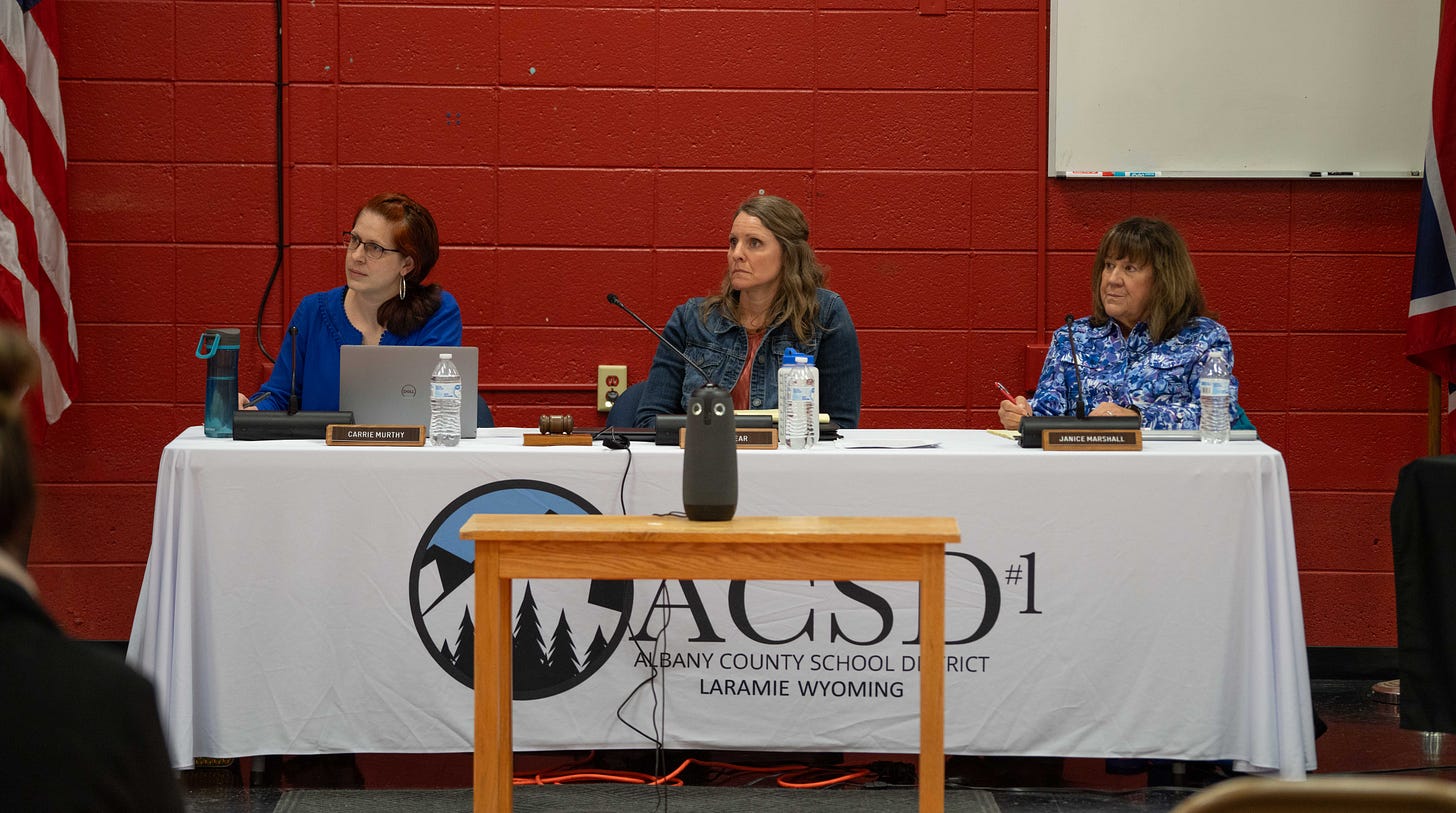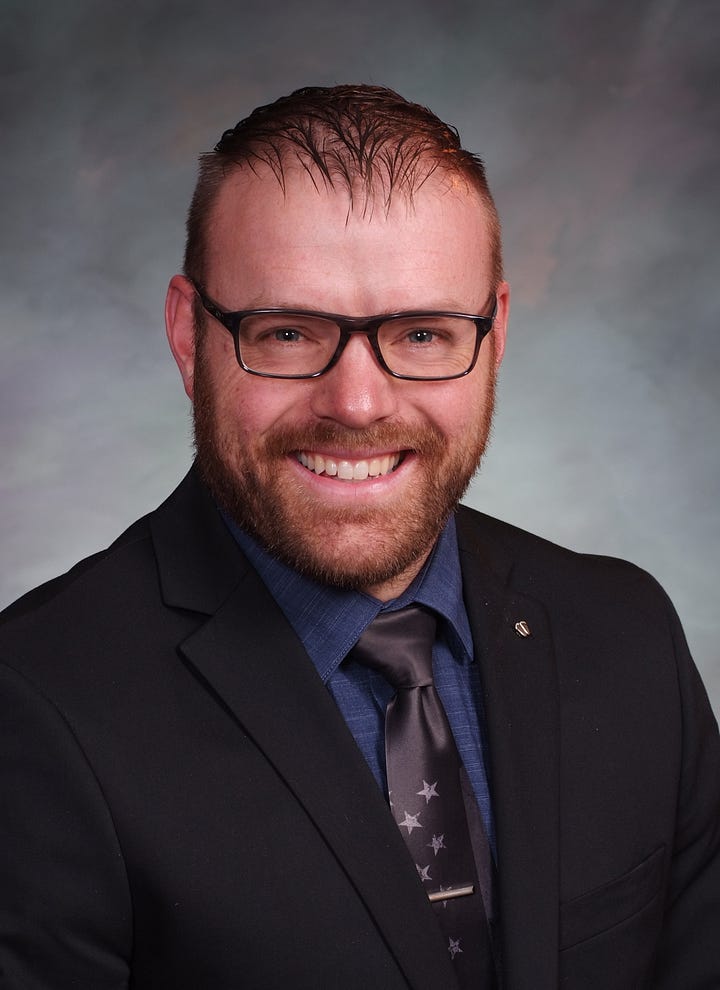Effort to repeal gun-free zones returns, advances
Albany County voices led opposition to the bill during the House Judiciary hearing Friday. Lawmakers returned Monday, amending the bill and advancing it with a 8-1 vote.
The House Judiciary Committee advanced a bill seeking to repeal gun-free zones in schools, at the University of Wyoming and in a variety of other government settings.
It’s one of several bills this session expanding who is allowed to carry and where concealed carry is allowed.
House Bill 172 outlines several locations where anyone may carry a concealed weapon — including local government and legislative meetings. It also outlines several locations where those bearing a state-issued concealed carry permit may bring a gun — including “[a]ny public elementary or secondary school facility” and “[a]ny public college or university facility,” as well as any alcohol-free athletic event hosted by either.
“This opens up state-funded facilities, the Capitol, Herschler [Building], all of those buildings … for concealed carry,” said Wheatland Rep. Jeremy Haroldson (HD-4), the bill’s primary sponsor. “So this would open up our community colleges, and would also open up the University of Wyoming.”
The bill is limited to concealed carry in government buildings — whether that’s constitutional concealed carry or state-permitted concealed carry. It does not apply to private businesses and does not allow the open carrying of firearms into government buildings.
“We do not need someone with an AR-15 slung across their chest standing in the balcony at the Capitol while we’re doing a vote on a contentious issue,” Haroldson said. “That’s not someone bearing arms and having the right. That’s someone being intimidating and causing a scene. Now, that doesn’t mean that people shouldn’t be able to defend themselves and have the right to defend themselves, but we don’t need to have it in an open carry status.”
The committee met Friday to receive public testimony, adjourning and reconvening Monday morning to amend and ultimately advance the bill. The committee voted 8-1 in favor of the bill, with Laramie Rep. Ken Chestek (HD-13) casting the sole dissenting vote.
UW requests exemptions for early childhood center, student dorms
Gun advocates have tried for years to pass such a bill. Most recently, in 2024, the Wyoming Legislature passed a bill similar to this year’s. Gov. Mark Gordon vetoed that bill, but directed state agencies like the University of Wyoming to reexamine their weapons ban.
UW did this, publishing proposed changes, surveying its campus community and hosting public forums about the topic — eventually deciding not to change the current policy.
“But we learned a lot in that process,” UW’s lobbyist, Mike Smith, told the committee Friday. “We talked a lot about the exemption areas … those were important to our community, important to our board to discuss.”
Some of the exemptions UW would recommend are already included in the bill. For example, the bill forbids concealed carry in campus health facilities and labs where explosive or volatile materials are present.

But UW requested other exemptions as well, such as for the dorms, for all athletic events, not just those serving alcohol, and the Early Childhood Education Center — none of which are present in the bill.
Though Chestek pitched an amendment to exempt the education center, the committee did not amend the bill to exempt any of the locations requested by UW.
Today, concealed carry is allowed on campus grounds but banned in university facilities. HB172 would eliminate that ban, ushering in a change to campus policy that most students and employees don’t want to see.
A parent, a professor, a lobbyist and a sheriff
While UW got a few shoutouts during the public testimony Friday, public K-12 schools got the most attention, with school board trustees and parents arguing for local control over their own communities’ gun policies.
Albany County School Board Trustee Carrie Murthy — who is both a parent of public school children and an education researcher in her professional life — said the teachers she spoke to in Laramie do not want to see the bill pass.
“I absolutely believe this bill would have devastating consequences for our educator workforce,” she said. “That the teacher shortages that we are already facing and struggling to adequately address would be exacerbated, and that, in turn, would have devastating consequences for our kids in Wyoming.”
She said allowing guns in schools would also make law enforcement’s job more difficult in the event of a school shooting.
“How are they supposed to tell the difference between the school shooter and a teacher with a gun who is trying to help?” Murthy asked. “As a mom, I send my kids to school every day with the trust that school is a safe place. This bill would significantly erode that trust, and it is heartbreaking to think that it would likely cause many of our incredible teachers to leave Wyoming or leave the profession.”

Proponents of the bill, including Gun Owners of America National Director of Hunter Programs Mark Jones, urged lawmakers to consider “statistics and facts” over such “emotional” pleas.
“I think that statistics and facts are important; 94% of mass shootings in America occur in gun-free zones,” Jones said. “These statistics are readily available on our website. We get them from the CDC and the FBI. 94% of mass shootings occur in gun-free zones … Remember these statistics later when you hear the emotional outcry about guns and gun-free zones.”
But Laramie Rep. Ken Chestek (HD-13) pushed back on this data, pointing out that the study claiming 94% of mass shootings occur in gun-free zones was produced by a gun rights organization and is based on data from 1950-1990 when “concealed carry was not allowed almost anywhere” and “basically the entire country was a gun-free zone.”
Though Chestek didn’t mention it, the study also included military bases as “gun-free zones” in a methodological decision other gun violence researchers have said “defies logic.”
Jones countered that much of the other, more recent information is biased.
“Remember too that the Biden Administration began to cook the books,” Jones said. “They began to count mass shootings as gang shootings involving two or more gang members. So if you take out the attempt to demonize gun owners — when you take out these gang shootings — you come back to the fact that gun-free zones are killing zones … If you’re going to hurt somebody, you go to a gun-free zone.”
Murthy and Chestek weren’t the only Albany County residents to testify Friday. Sheriff Aaron Appelhans opposed the bill, urging for local control on the topic of guns in schools.
“We have a variety of different school districts that are moving forward in terms of concealed carry within their ranks, at their counties; we have a variety of other counties that are not moving forward with that,” Appelhans said. “And both of those decisions are best for the community that are there … This bill essentially removes those choices that are being able to be made at that local level, and essentially mandates it from the state level.”
Giving House Bill 172 a seal of approval
Lawmakers returned Monday to work the bill and take a vote. Several amendments shored up language and pushed the bill’s effective date to this summer, giving institutions time to prepare for the mandated policy change.
Another amendment made clear that institutions like UW would have the ability to regulate firearm handling and storage.
Cheyenne Rep. Daniel Singh (HD-61) said he supported the bill because he saw it as a way to protect human life. He made reference to the 2017 shooting at Parkland High School in Florida, when the armed school resource officer on scene failed to intervene and 17 people were killed.
“Without this bill, the responsibility to handle a crisis situation would land solely on law enforcement in order to alleviate the threat,” he said. “And the fact of the matter is that during crisis situations, like the ones that we are all fearful of, that law enforcement failed to live up to their responsibility … the law enforcement officer did not act and added even more minutes to the situation where lives were lost.”


Chestek said he didn’t believe allowing concealed carry in schools and on the university campus would deter those looking to commit an atrocity, but it would increase the number of guns in those spaces, and by extension increase the likelihood of accidents or escalations.
“Having the gun there in the first place creates new dangers that didn’t exist before,” Chestek said. “If the owner of that gun loses control of the weapon somehow — they leave it behind in the bathroom, they displace it, or it’s stolen from them — or they get into an argument, and it’s taken from them. The presence of the weapon creates danger that doesn’t need to be there.”
HB172 will have to survive three readings on the House floor before it can be sent to the Senate for another committee hearing and three votes on that chamber’s floor.
This proposed legislation is not the only bill this session that would alter UW’s “dangerous weapons” ban. Senate File 37 would establish a new “enhanced” concealed carry permit and allow holders of such a permit to carry in university facilities. The senate file has not yet cleared introduction.





What is missing from the entire focus on the percentage discussion is the premise of John Lott's work. He claims that murder and violence went down due to the relaxation of gun restrictions, which is a frankly laughable premise; however, that argument gets missed in this evaluation. When we get caught up arguing about a statistic based on a false premise then we as a society end up losing. The Bill is based on John Lott's "peer reviewed" statistics is built on a false premise making for a poor law. Every person advocating for this Bill used John Lott's work whether it came from his book or from his website Crime Prevention Research Center. John Lott's quest to prove his theory that more guns lowered murder begins with the Luby's massacre in 1991 where one victim lamented leaving her gun in the car because of a restriction on weapons. So instead of focusing on why the murderer went on a rampage, the solution was more guns.
Mark Jones is lying when he says that these statistics are readily available on his website. I did the search https://www.gunowners.org/?s=%2294%25%22 and found the statistic in articles but no reference from whence it came. In fact I emailed Ken Chestek about the NRA representative's claim he made in his testimony and of course the reference is traced back to John Lott's erroneous work. https://crimeresearch.org/2025/01/updated-information-on-mass-public-shootings-from-1998-to-2024/
Even Professor Mocsary, the head of National Firearms Research Center at UW, uses John Lott's work to bolster his arguments, which the trustees and the public failed to call him out, and in fact the trustees showed deference to his ludicrous premise.
When we are arguing about the percentages of shootings in gun free zones we have already lost because we have accepted the false premise that murders in America started to go down from their high point in 1990 due to more guns flooding America. The GOA and NRA are arguing to close the loop hole in making America safe is just one more law based on false data.